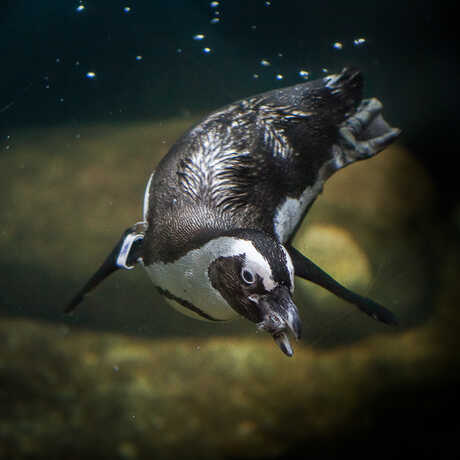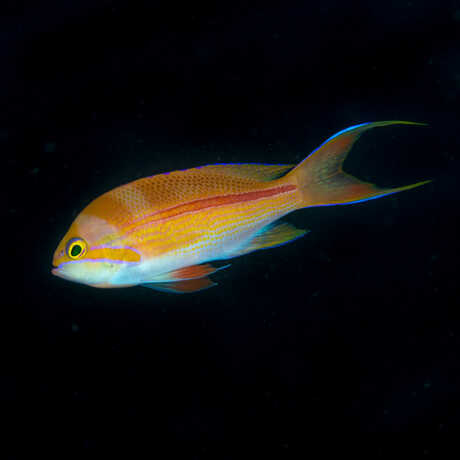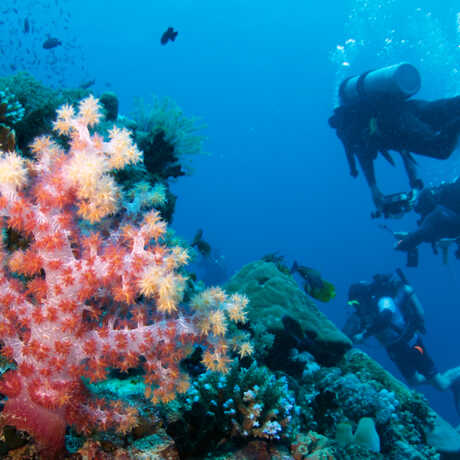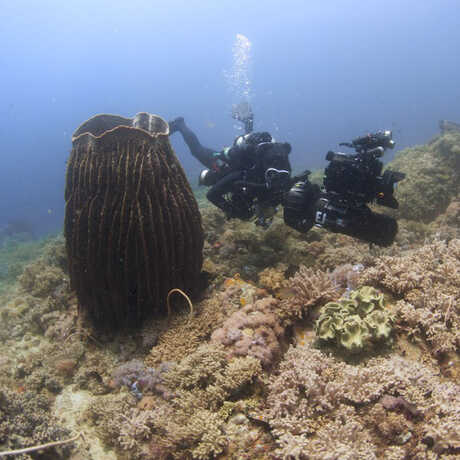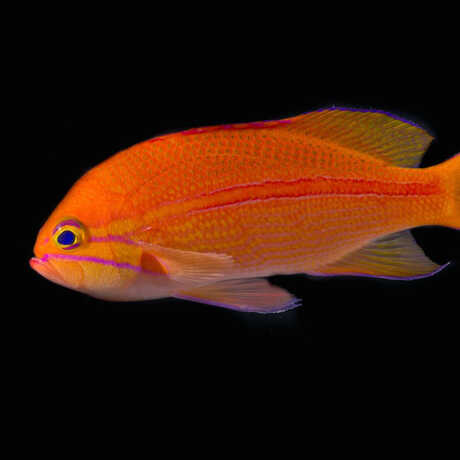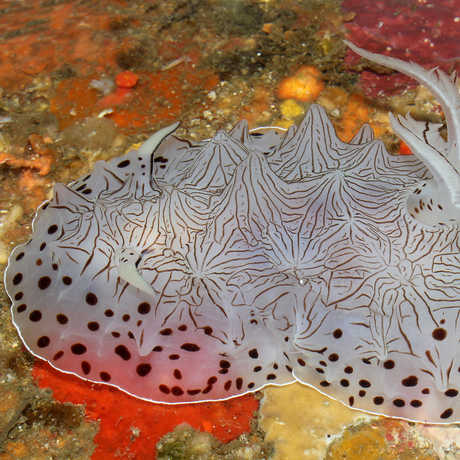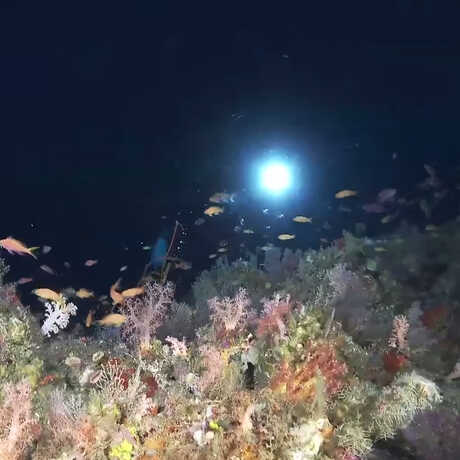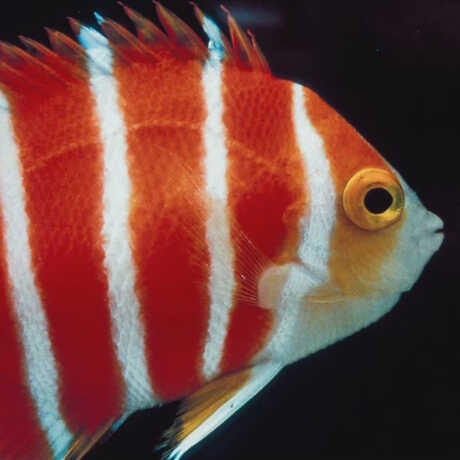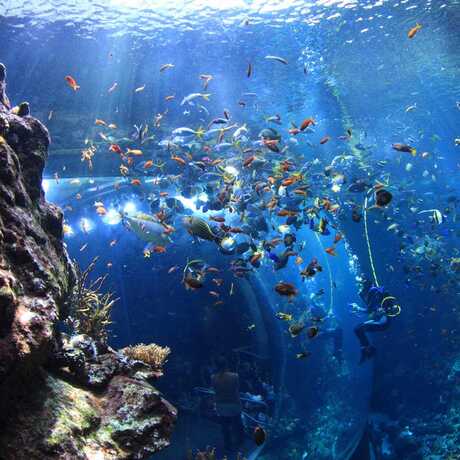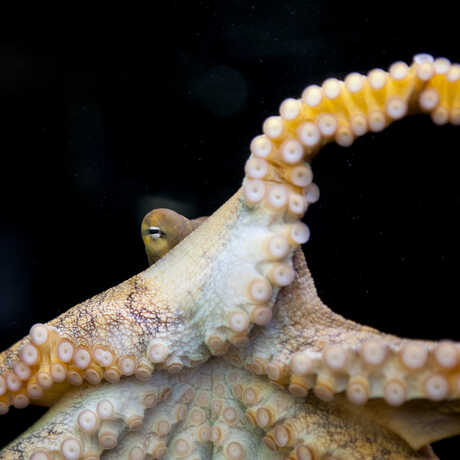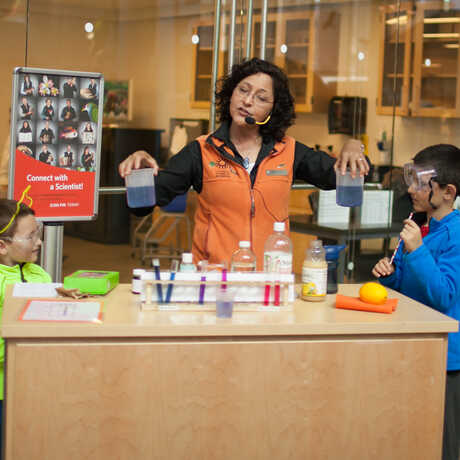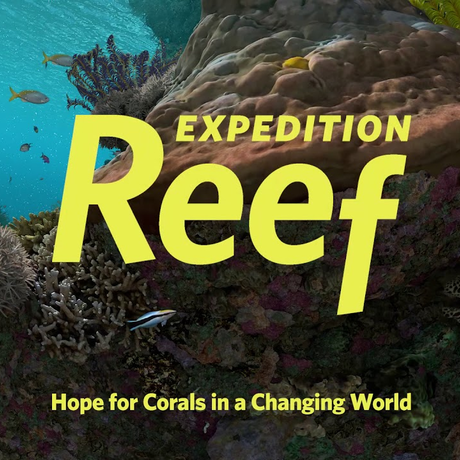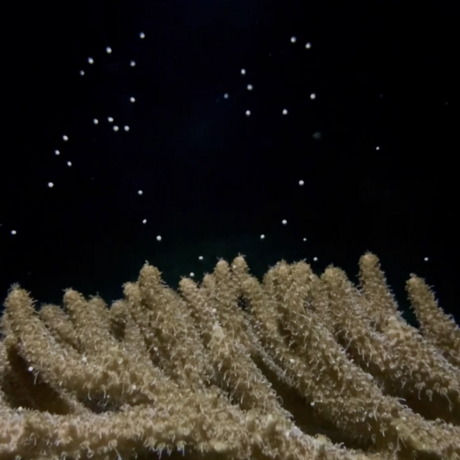As light fades, colors do too. This helps camouflage the twilight zone's flashy rainbow-colored fish—especially the red ones—while notably big eyes help them navigate the darkness of the deep reefs.
Twilight Zone: Deep Reefs Revealed
Descend into the twilight zone, a place where sunlight is scarce and divers with traditional scuba gear cannot go. In the narrow band between the light-filled shallow reefs and the pitch-black deep sea, these little-known mesophotic reefs—located 100 to 500 feet beneath the ocean’s surface—are home to fascinating and diverse marine life.
Every dive yields surprising discoveries, and in Twilight Zone: Deep Reefs Revealed, you’ll see new and rare species, many of which have never been displayed in a public aquarium. Explore the great unknown alongside our scientists as they uncover what secrets these uncharted places may hold for the survival of the world’s coral reefs.
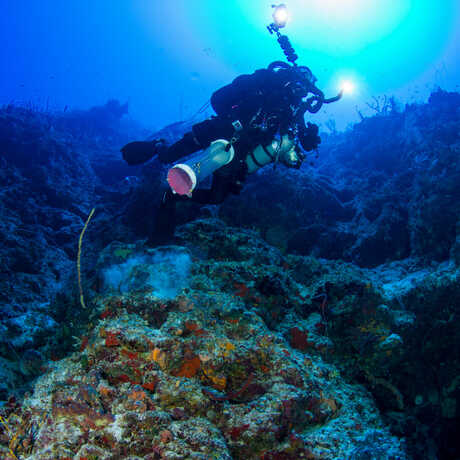
Under pressure
With hundreds of feet of water above them, divers in the twilight zone are under intense pressure—literally. To descend to such depths, divers must undergo extensive training and use high-tech equipment like closed-circuit “rebreathers,” which allow them to extend their research time underwater.
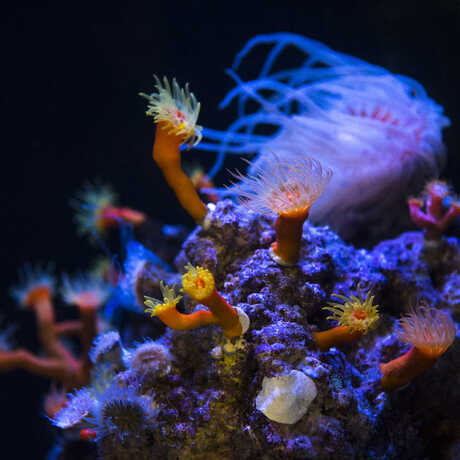
In living corals
Fish aren’t the only technicolor animals in the twilight zone. Get up close with incredible fluorescent corals that thrive in the deep and candy-colored benthic ctenophores—comb jellies affectionately dubbed “sea peeps” due to their resemblance to a certain marshmallow treat.
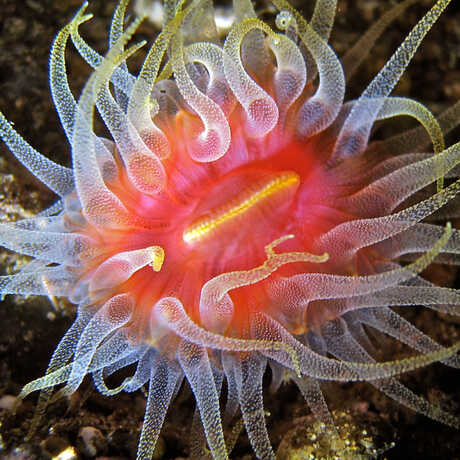
Glowing in the deep
How do animals communicate in the dark? Learn how bioluminescent animals—from blinking flashlight fish to glowing microorganisms—communicate by producing their own light and give it your best shot with a luminous interactive LED wall.
Be mesmerized by colorful coral reef fish, soaring stingrays, and adorable African penguins—streaming live to your device, 24/7.
